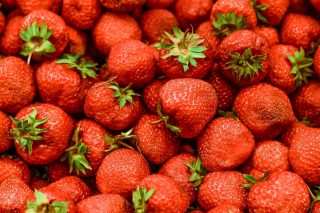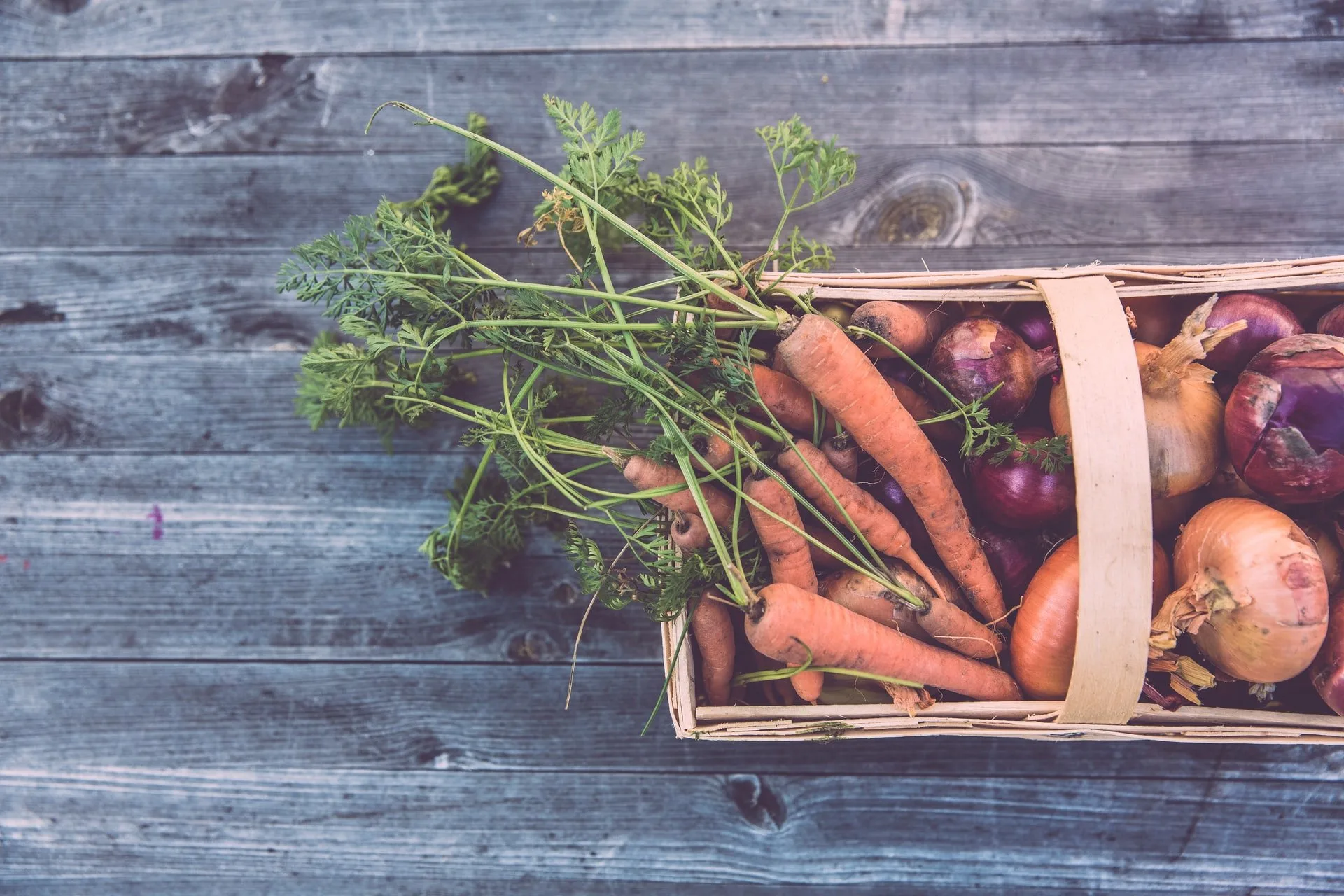While the coronavirus pandemic is something that definitely deserves the world’s attention, many people, such as climate activist Jane Fonda, understand the catastrophic effects of climate change, thus they’re doing their best to reduce their carbon footprint.
While there are many ways to adopt more sustainable habits, one of the best ways to minimize your carbon footprint is by making dietary changes. In fact, a study published in The Lancet found that making dietary changes can help to effectively slash greenhouse gas emissions and water use.
How do our diet choices affect the environment?
According to a study from Oxford University, nearly a quarter of the world’s global carbon footprint comes from the food we eat, with animal products accounting for a large section of this – but we’ll discuss that later on.

Photo by Markus Spiske from Pexels
Food production requires energy. So, your carbon footprint/environmental impact includes the level of greenhouse gas emissions, water use, and land use that it takes to produce your food, and every choice that you make can either help or hurt the environment.
Therefore analyzing your dietary choices is a great step towards helping the environment and reducing your carbon footprint. Additionally, transforming your diet can also boost your health. So where do you start?
10 Nutrition Tips To Reduce Carbon Footprint
1. Stop overfilling your kettle
According to an article published in The Guardian, a kettle uses more electricity than an electric oven, hob, and microwave. While the oven does use more power when it is on, constantly filling a kettle, and boiling more water than necessary, it ends up using more power annually.
To combat this, visiting professor of chemical engineering at Strathclyde University, Tom Baxter suggests that the best way to cut back on electricity bills is by filling the kettle correctly.
You can also switch to an energy-saving kettle, such as the Quickone Takei Energy-Saving Fuefuki Whistle Kettle.
2. Enough with the plastic!
Seriously, enough.
We all know about the environmental dangers of single-use plastic, and unfortunately, the COVID-19 pandemic heavily contributed to worldwide plastic pollution (1).
Be it plastic wrapping, plastic bags, or plastic storage containers, we really need to cut back on the way we use plastic when it comes to how we manage food.

Photo by Volodymyr Hryshchenko on Unsplash
Here are some tips to use less plastic:
- Choose reusable and washable fabric masks
- Use reusable and washable cloths to clean surfaces
- When ordering online, request less (or no) plastic packaging
- Bring your own grocery bags to the store.
- Drink from reusable water bottles
- Store food in glass containers
- Buy less takeout food
3. Stop eating meat
According to a UN report from the Intergovernmental Panel on Climate Change (IPCC), switching to a plant-based diet and cutting back on your meat consumption is one of the most effective ways to reduce your food carbon footprint.
“We don’t want to tell people what to eat,” says Hans-Otto Pörtner, an ecologist who co-chairs the IPCC’s working group on impact, adaptation, and vulnerability. “But it would indeed be beneficial, for both climate and human health, if people in many rich countries consumed less meat, and if politics would create appropriate incentives to that effect.”
According to a 2018 study published in Science, people with the highest intake of plant-based proteins and the lowest intake of animal proteins produced the lowest amount of greenhouse gas emissions.
If going completely meat-free sounds a little too daunting for you, then you can just reduce the amount of meat you eat. The aforementioned study found that if everyone in the UK swapped just one more red meat-based meal for a plant-based meal per week, they would cut the UK’s greenhouse gas emissions by 50 million tonnes.
4. Stop food waste and eat your ugly-looking fruits and veg
Food waste is responsible for 26% of global greenhouse gas emissions so cutting back on our food waste is a great way to reduce your carbon footprint.

Photo by Anton Darius on Unsplash
So, where do you start?
Well for one, you can start by eating those funny-looking fruits and vegetables that you throw out because you don’t like their appearance. In fact, a 2018 study published in the Journal of Cleaner Production Eating that found over 50 million tonnes of misshapen fruit and vegetables are thrown away in the UK and Europe every year – can you manage the climate impact of throwing away food because you don’t like the way it looks?
In addition to eating more wonky-looking produce, you can also plan meals ahead of time, save leftovers, and, only buy what you need.
5. Consider your cooking methods
Not only does cooking at home translate to a healthier diet, but it can also help combat global climate change.
So how can you cook in a more efficient way that uses less electricity and, in turn, produces less carbon dioxide?
Well, in addition to shopping locally and seasonally (more on that later on), you can also start using a pressure cooker, like the Instant Pot Duo 7-in-1 Electric Pressure Cooker, as pressure cookers are incredibly energy efficient.
6. Buy local
Yes, food transport only accounts for about 1% of greenhouse gas emissions produced by animal products, but that doesn’t mean that we still shouldn’t address the problem.

Photo by Omotayo Tajudeen from Pexels
What’s more, eating locally helps to support the local economy, and it also helps support local farmers, and after the year that was 2020, buying locally is the least that you can do. What’s more, you’ll get a better understanding of where your food comes from, and you can also speak to local growers about their farming practices and how they raise and harvest their crops.
7. Eat seasonally
According to naturopathic Dr. Karen Wallace, eating seasonal produce not only provides a better taste but also offers more nutritional value (2).
Additionally, eating seasonal is much more beneficial for the environment as produce grown out of season requires more energy and resources in order to create the conditions it is used to growing in.
8. Eat organic
According to a study published in Frontiers in Nutrition, organic food provides significant, additional climate benefits for plant-based diets, but not for diets with only moderate contributions from plant products.
“… We found that across the board, diet-related environmental impacts were reduced with a plant-based diet — particularly greenhouse gas emissions,” said study author Louise Seconda in a statement. “The consumption of organic food added even more environmental benefits for a plant-based diet. In contrast, consumption of organic food did not add significant benefits to diets with high contribution from animal products and only moderate contribution from plant products.“
Additionally, a French study published in JAMA Internal Medicine that followed 70 000 adults for five years found that participants who frequently ate organic developed 25% fewer cancers than those who never ate organic. So not only is organic food great for the environment, but it’s also amazing for your health.

Photo by Andrey Niqi from Pexels
9. Cut back on dairy
According to a study examining 2 101 Dutch adults, dairy products were the second largest contributor to individual greenhouse gas emissions — behind only meat.
Clearly dairy products greatly contribute to greenhouse gas emissions (an aforementioned study found that cheese was associated with greater greenhouse gas emissions than other animal products). Therefore, it would be better to cut back on your dairy intake. Additionally, you can also look at plant-based alternatives like coconut, almond, hemp, or soy milk.
10. Grow your own produce
Why wouldn’t you want to grow your own food? Aside from the fact that having your own garden helps to reduce stress levels, growing your own food also ensures that you’ll consume a healthier diet.
In regards to the environment, growing your own produce means that you’ll stop relying on store-bought produce and you’ll be avoiding the use of pesticides. It really is a win for everyone!
Conclusion
Transforming your diet is not only a great way to boost your health but it’s also an excellent way to reduce your carbon footprint and protect the environment. At the end of the day, it’s important to remember that the smallest changes can often make the biggest impact.



![women [longevity live]](https://longevitylive.com/wp-content/uploads/2020/01/photo-of-women-walking-down-the-street-1116984-100x100.jpg)










